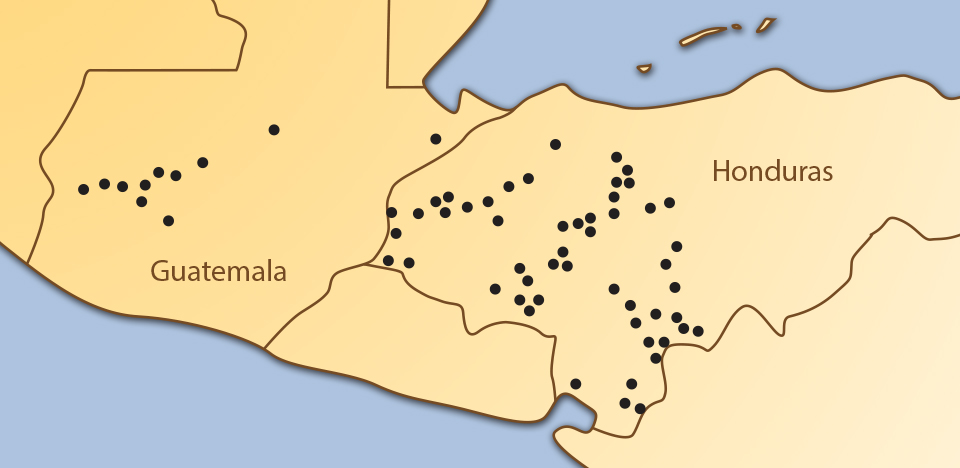
Guatemala
Guatemala is a beautiful, diverse country with a population of 14 million and possibly the lowest literacy rate in Latin America – around 70%. It is even less in rural areas, especially for women and girls. With over 20 different indigenous languages spoken with Spanish which is often the second language, teaching reading is challenging. School is technically free but out of reach to many who cannot afford the required uniforms and school supplies. [NOTE TO BILL: would like to have a sentence here that is more focused toward current geopolitical challenges presented to these communities similar to that in Honduras]
Honduras
Honduras is the largest and third poorest country in Central America.It is mostly rural with over half of the population living in remote sparsely populated areas. About 75% of Honduras’ 8 million citizens live in poverty, meaning they are unable to meet their most basic needs. As in Guatemala, education is, in theory, free of charge. However, the quality of public education suffers due to on-going labor and political strife that shortens the school year to only a fraction of the required 200 days of classroom studies. The community centers that Riecken libraries have become wherever they are located offer opportunities for both individual and community development.
Tajumulco, San Marcos
San Juan Chamelco, Alta Verapaz
Zacualpa, El Quiché
Cabricán, Quetzaltenango
San Juan La Laguna, Sololá
Chiché, El Quiché
Río Blanco, San Marcos
San Carlos Sija, Quetzaltenango
Huitán, Quetzaltenango
Cantón Xolsacmaljá, Totonicapán
Parramos, Chimaltenango
Las Pilas, Sulaco, Yoro
San Antonio, Yoro
Concepción de María, Choluteca
Yuscarán, El Paraíso
La Libertad, Comayagua
Esquías, Comayagua
Minas de Oro, Comayagua
San Luis, Comayagua
El Guante, Francisco Morazán
Sta. María de La Paz, La Paz
Lejamaní, Comayagua
Llano de la Virgen, Intibucá
San José del Potrero, Comayagua
El Porvenir, Francisco Morazán
Nueva Morolica, Choluteca
San Lucas, El Paraíso
San Antonio de Flores, El Paraíso
El Tular, Valle
Jacaleapa, El Paraíso
Yorito, Yoro
Guatemalita, Francisco Morazán
Tatumbla, Francisco Morazán
Cedros, Francisco Morazán
San Jerónimo, Comayagua
San José de La Paz, La Paz
San Antonio del Playón, Ajuterique, Comayagua
Santa Cruz de Yojoa, Cortés
Santa Ana, La Paz
Guajiquiro, La Paz
Rancho Grande, Comayagua
Guacamaya, Progreso, Yoro
Namasigue, Choluteca
Cuyalí, El Paraíso
San Matías, El Paraíso
Duyure, Choluteca
Hoya Grande, Morocelí, El Paraíso
Maraita, Francisco Morazán
San Francisco de Cones, Sensenti, Ocotepeque
Nueva Ocotepeque, Ocotepeque
San Pedro, Copán
San Juan Planes, Copán
Dulce Nombre, Copán
Naranjito, Santa Bárbara
Flor del Campo, Tegucigalpa, Francisco Morazán
Gualala, Santa Bárbara
Santa Cruz Cuchilla, Santa Bárbara
Santa Cruz, El Níspero, Santa Bárbara
San Vicente, Centenario, Santa Bárbara
Atima, Santa Bárbara
La Alianza, San José de Colinas, Santa Bárbara
Copán Ruinas, Copán Ruinas
